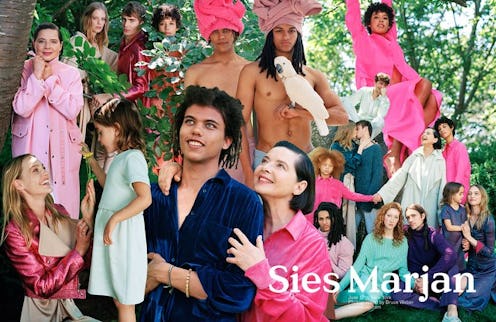“Diversity” is more than just a buzzword. It’s a necessity — and that’s especially true for the fashion industry. After all, fashion is universal, allowing people of any and all identities express who they are to the world. But the industry is only just realizing how vital it is to include women of different backgrounds and experiences in their campaigns. Thankfully, Fall 2017 fashion campaigns prove the industry is changing its face and responding to criticism — albeit slowly.
The Fashion Advertising Diversity Report, which was just released by theFashionSpot, focuses on the identities of female models featured in Fall 2017 campaigns. Researchers from the website analyzed 187 major fall campaigns, which casted a total of 457 female models. The results show that pressure to increase diversity within the industry is working, though much still needs to change to improve the industry.
Overall, fall ad campaigns were considered “more diverse” than previous seasons when it comes to race representation, with models of color representing 30.4 percent of all female models cast. But of the seven models who booked the most campaigns this fall, only one model, Adwoa Aboah, was non-white.
Yves Saint Laurent, Coach, Christian Dior, Dolce & Gabbana, Gap, Helmut Lang, and Nordstrom were recognized as the major brands featuring the most racial diversity in their fall campaigns.
That status is especially noteworthy for YSL, a brand notorious for not casting a single model of color in its campaigns between 2001 and 2015, theFashionSpot notes. For Saint Laurent’s Fall 2017 campaign, three models out of four were women of color.
The brand, however, did come under fire for "degrading" women in their fall campaign. You can see one of the images below.
But don’t vigorously applaud the industry's progress just yet. There is still a lot of room for improvement when it comes to racial representation, with many brands completely missing the mark. Popular brands Balmain and Vivienne Westwood each cast just one woman of color their campaigns, which featured six models or more.
But back to the good news. The report found that other underrepresented groups were showing growth in representation, too. For example, 14 models over the age of 50 appeared in campaigns for Fall 2017, representing 3.1 percent of all castings. Though a seemingly tiny number, “mature model” representation increased sevenfold since Spring 2017, when only two 50-plus models were cast.
Transgender representation in fashion campaigns is also on the rise, with six trans models cast in fall’s campaigns. This season marks the most trans inclusion in a season’s campaign cycle since theFashionSpot started tracking data two and a half years ago. While six models out of 457 isn’t enough to write home about, it does show that transgender women are slowly gaining more positive visibility — both in fashion and society.
Though representation of women of color, trans women, and women over 50 is on the rise, there is one underrepresented group that saw a dip in representation since last season. Out of the 457 campaigns analyzed, only 10 featured plus-size women — a minuscule 2.2 percent of overall ads. That’s 0.1 percent less than where the industry was in Spring 2017, showing a disappointing drop in plus representation.
But there is a bit of hope in these stagnant stats. Though few plus-size models were cast in campaigns, three out of the 10 models landing gigs were featured in ads by non-plus brands. Some even landed big name campaigns, including ads with Dolce & Gabbana and Vivienne Westwood.
Moral of the story: The industry is taking steps forward, but more needs to be done before brands can claim they fully embrace diversity. Let’s hope we see the number of historically underrepresented models skyrocket next season. After all, inclusion is always in fashion.
